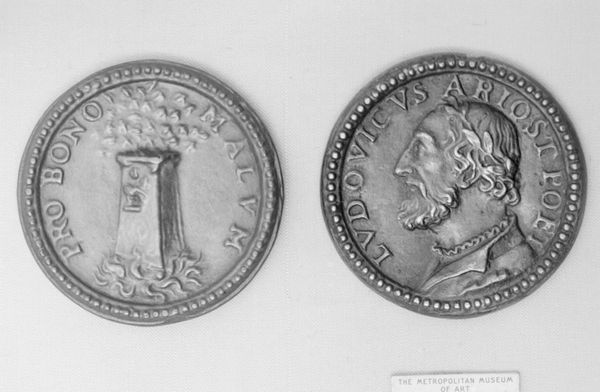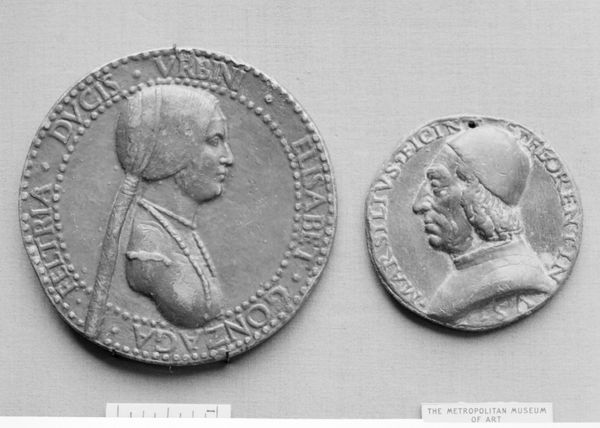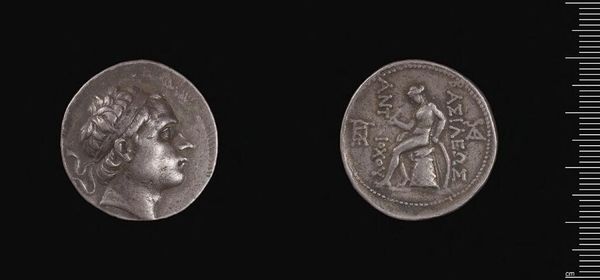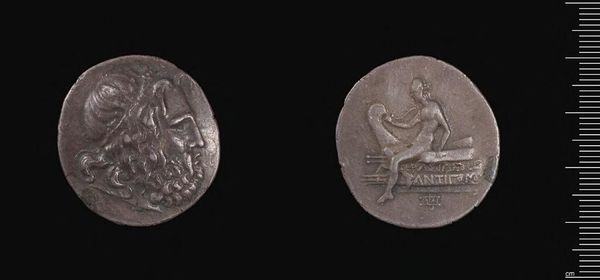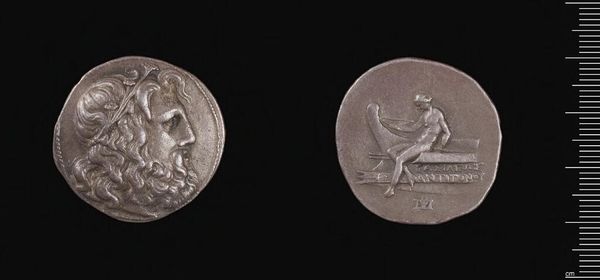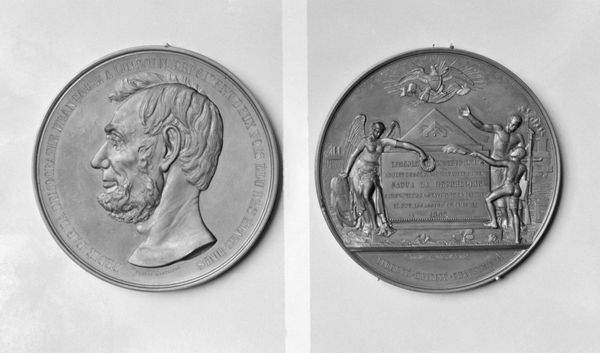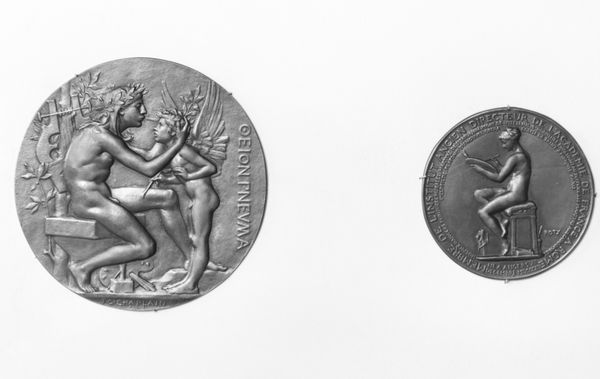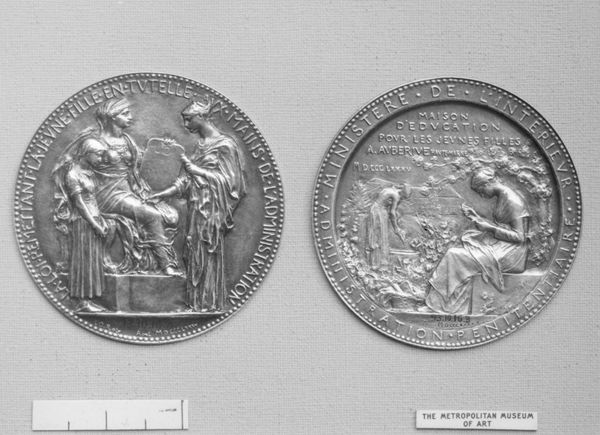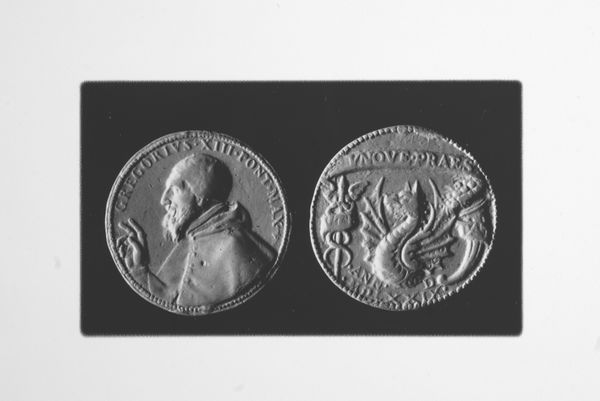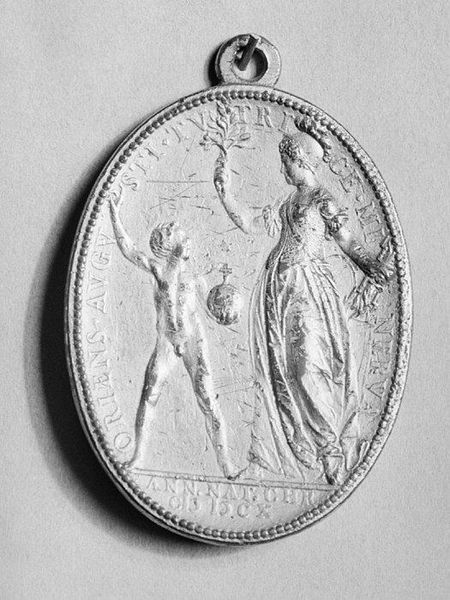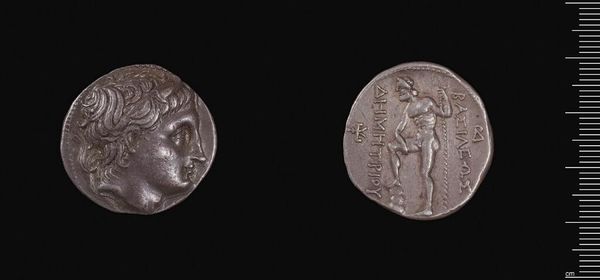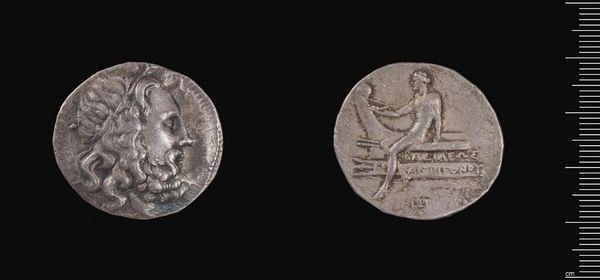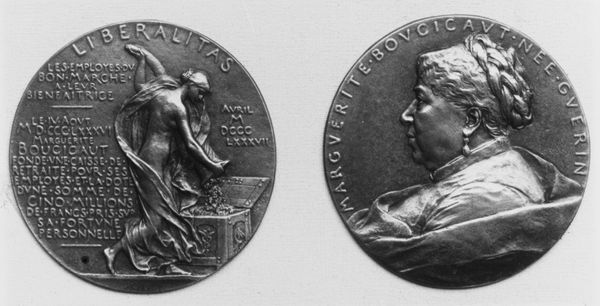
Marcantonio Passeri (1491–1565), Professor of Philosophy in the University of Padua 1530 - 1565
0:00
0:00
metal, sculpture
#
portrait
#
medal
#
metal
#
sculpture
#
11_renaissance
#
sculpture
#
men
#
history-painting
#
decorative-art
#
italian-renaissance
#
profile
Dimensions: Diameter: 1 1/2 in. (38 mm)
Copyright: Public Domain
Editor: So this medal, "Marcantonio Passeri, Professor of Philosophy in the University of Padua" by Giovanni del Cavino, likely dates between 1530 and 1565. It's crafted from metal and resides at the Met. I'm struck by the contrast between the solemn portrait on one side and the rather frantic-looking figure on the other. What do you make of this juxtaposition? Curator: It’s not a juxtaposition as much as a material dialectic, wouldn’t you agree? Cavino, through his tooling, consciously creates an object both commemorative and…what? The very notion of “Professor” carries the baggage of labor, institutional structures, patronage – all embodied in the physical object you are holding now, isn't it? How would such context be embedded by crafting methods of this time? Editor: I see your point about labor. The physical creation of the medal involved skilled craftsmanship, certainly. How does this elevate the medal, and why would someone choose metal as the medium for something so scholarly? Curator: Elevate? The question, rather, is how that craftsmanship served specific ends. Was this material, this metallic representation, chosen because of its potential for mass production or individual commissions? Perhaps its durability implied a certain permanence – the enduring value of the intellectual work portrayed, even amidst a shifting social landscape where universities compete and new philosophers arose... Editor: That’s fascinating – so the medal is less about celebrating an individual and more about how the production itself is tied into the context? Curator: Precisely. The very material is itself a commodity, an object of consumption, and how does *that* understanding change your relationship with it, and even philosophy and pedagogy? What does this mean when we consume or even learn about ancient art history from similar methods today? Editor: I hadn't considered it that way. It pushes me to look beyond the image and into the wider social context surrounding its creation, the artist's methods, and that commodity as a symbol! Thank you.
Comments
No comments
Be the first to comment and join the conversation on the ultimate creative platform.
